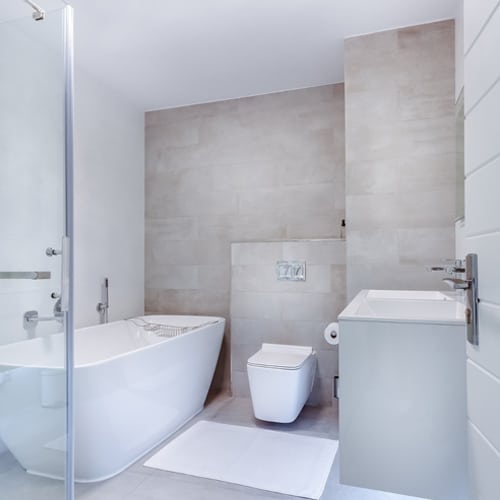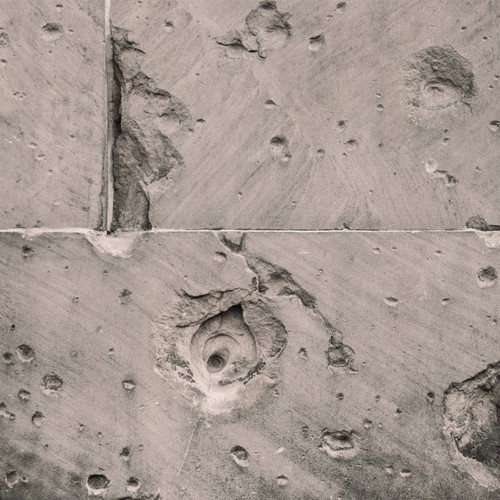Waterproofing is an important component of a building during construction. A properly installed waterproofing system should last you anytime between 10-15 years. On the contrary, a poorly installed waterproofing system can cause water leakages almost immediately after it meets water, avoid such waterproofing mistakes. It is crucial for developers, home owners and contractors to understand the complexities of waterproofing and not neglect the importance of it. Therefore, we will discuss some common mistakes of waterproofing in this article in hope to raise awareness on the importance and complexities of waterproofing.
1. Puncturing the waterproofing membrane after installation
There are some works in the bathroom that comes after waterproofing which may penetrate and puncture the waterproofing membrane. Some examples are: tiling, carpentry, and installation of accessories. If the contractors are not experienced, they may hit a nail or drill a hole into the already completed waterproofing membrane and puncture it, causing the entire system to not be water-tight. This is also a concern when it comes to roofing works where contractors may need to drill to secure lightning cables or install wooden decking.
2. Insufficient sloping resulting in stagnant water
Waterproofing systems should not be excessively exposed to water for prolonged periods of time, it is important to have sufficient slope to drain to facilitate discharge of water to prevent this. Waterproofing membranes degrade when exposed to water for too long, as such, a proper waterproofing system should have enough sloping to allow water to be drained out quick enough and prevent stagnant water.
3. No angle fillet applied
A common problem waterproofing mistake is with the joints between walls and floor slabs. Over time, the joints between walls and floor slabs will crack due to settlement, and if the crack is big enough, it will result in cracking of waterproofing membrane. It is important to apply angle fillet around these joints and corners before applying waterproofing membrane. The angle fillet acts to reduce the damage on the waterproofing membrane by cracking.
4. Improper surface preparation
Preparation of surface prior to waterproofing is of utmost importance to the success of the entire waterproofing system. Surfaces should be prepared to be free of loose particles, oil, grease, and weak surface materials. There are generally two methods of cleaning: mechanical cleaning and chemical cleaning. The most commonly used method of cleaning is by high pressure jet-wash.
5. Insufficient attention to pipes and penetrations
The joints between pipes or penetrations with the floor slab is always the weakest and water leakage often happen through these joints. Pipe penetrations must have additional protection measures. Ensure the waterproofing membrane to be applied must be able to adhere with the pipes and pipes’ surroundings must be properly prepared with cement mortar to ensure that joints are fully covered.
6. Mistake that tiles and tile grouts are waterproof
Contrary to popular beliefs, tiles and grouts are not waterproof. Some home owners believe that by re-grouting the tiles gaps, the water leakage issues will be solved. Most tile grouts are cementitious and are not waterproof. Even epoxy grouts are not waterproof, moisture and vapour can still transmit through epoxy grouts.
7. Omitting priming the surface or substrate before waterproofing
Primers are usually applied onto surfaces and substrates before application of waterproofing. Purpose of the primer is to create a more adhesive substrate and improve the bonding between the substrate and waterproofing membrane. Without proper priming, waterproofing membranes may not bond well with the substrate and can peel off. Priming is important especially for newly constructed substrates.
8. Failing to conduct water ponding test
Upon completion of the waterproofing system, a water ponding test should be carried out before proceeding with any other works. This is to ensure that the waterproofing system is installed properly any there is no water leakage. If there are any problems with water leakage, rectification works can be carried out without having to remove anything.
In conclusion, a properly designed and installed waterproofing system should last a very long time, therefore strong emphasis must be placed on waterproofing during renovation or construction to prevent having to deal with water leakages in the future. Avoiding the above-mentioned common waterproofing mistakes will help to reduce the possibility of a failure in waterproofing systems. Drop us a call for non-obligatory on site inspection.




